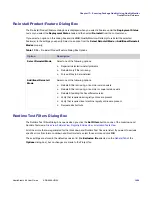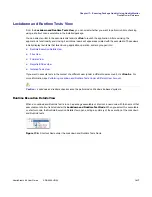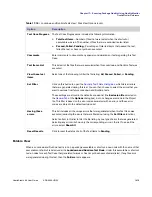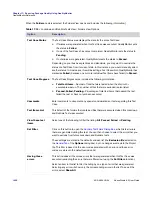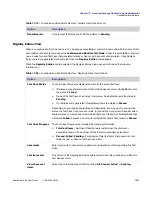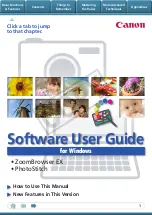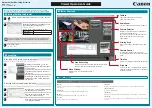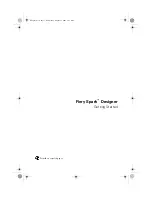
Chapter 17: Ensuring Package Quality Using QualityMonitor
QualityMonitor Reference
AdminStudio 9.5 User Guide
ADS-0950-UG00
1407
Exclusions Tab
When a Deployment Test is run on a package, some of the tests related to Class IDs, Prog IDs, and Type Library
IDs fail because they refer to components which belong to the operating system rather than the software which is
being tested. These errors have no impact on the integrity of the software being tested, and cause confusion
among some users testing the software. Users need to be able to prevent error messages caused by files that are
not affecting the performance of the software package to be listed in the test results.
On the
Exclusions
tab, to prevent these operating systems errors from being reported, you can specify a list of
files to be excluded when any of the Class ID, Prog ID, or Type Library ID Deployment Tests are run. You can
maintain a different list for each of these three Deployment Tests.
Note •
After a Deployment Test has been run, the test results are listed in the
Class IDs View
,
Prog IDs View
, or
Type
Libraries View
. The items included in the exclusion lists are not shown in these views, but are still stored in the
QualityMonitor Project File (
.iqm
). When this project file is opened again in QualityMonitor, the results are checked
against the exclusion list before being displayed in the
Class IDs View
,
Prog IDs View
, or
Type Libraries View
.
The following options are included on the
Exclusions
tab:
Table 17-12 •
Options Dialog Box—Exclusion Tab Options
Options
Description
Exclusion list
Select the type of Deployment Test that you want to modify the exclusion list for:
•
Class ID
•
Prog ID
•
Type Libraries
Listing
Listing of the Class IDs, Prog IDs, or Type Libraries that you have chosen to exclude from the
selected Deployment Test. The following information is included:
•
Identifier
—Number identifying the Class ID, Prog ID, or Type Library.
•
File Name
—Name of file that contains the Class ID, Prog ID, or Type Library.
•
Status
—The exclusion status is either
Active
or
Inactive
. Only
Active
exclusions are
excluded from the test results.
Inactive
exclusions are neglected/omitted from the
exclusion process. The only way to change the status from
Active
to
Inactive
(or vice
versa) is to manually edit the exclusions file.
•
Type
—The exclusion type is either
User
or
System
. Exclusions added by the user are of
User
type. Users can delete only
User
type exclusion entries.
Add
Click to open the
Add Exclusions Dialog Box
, where you can select a Class ID, Prog ID, or
Type Library to exclude from Deployment Tests.
Remove
Click to delete the selected Class ID, Prog ID, or Type Library from the exclusion list.
Summary of Contents for ADMINSTUDIO 9.5
Page 1: ...AdminStudio 9 5 User Guide Version 9 5...
Page 50: ...Contents 50 ADS 0950 UG00 AdminStudio 9 5 User Guide...
Page 52: ...52 ADS 0950 UG00 AdminStudio 9 5 User Guide...
Page 156: ...156 ADS 0950 UG00 AdminStudio 9 5 User Guide...
Page 440: ...440 ADS 0950 UG00 AdminStudio 9 5 User Guide...
Page 1090: ...1090 ADS 0950 UG00 AdminStudio 9 5 User Guide...
Page 1426: ...1426 ADS 0950 UG00 AdminStudio 9 5 User Guide...
Page 1686: ...1686 ADS 0950 UG00 AdminStudio 9 5 User Guide...
Page 1794: ...Chapter 24 AdminStudio Public API Reference 1794 ADS 0950 UG00 AdminStudio 9 5 User Guide...
Page 1842: ...Index 1842 ADS 0950 UG00 AdminStudio 9 5 User Guide...

















